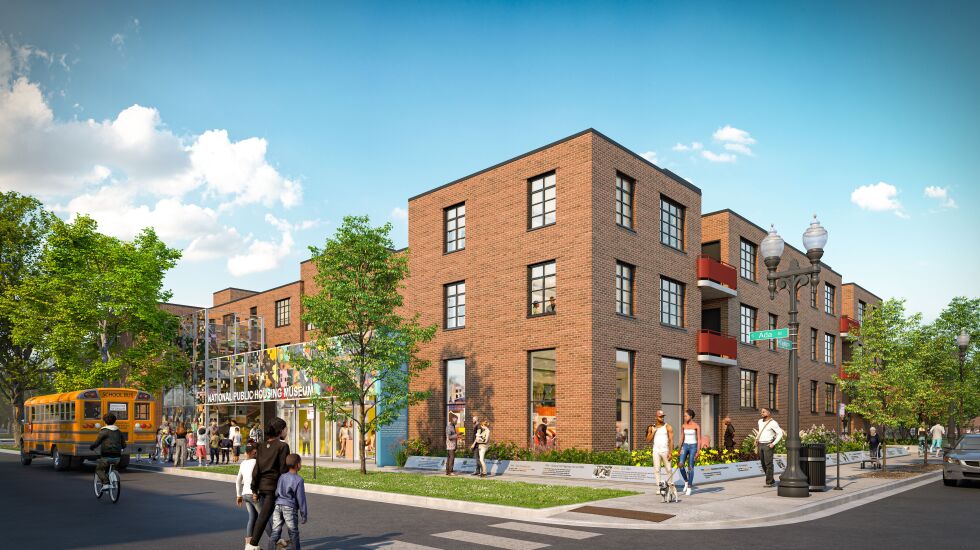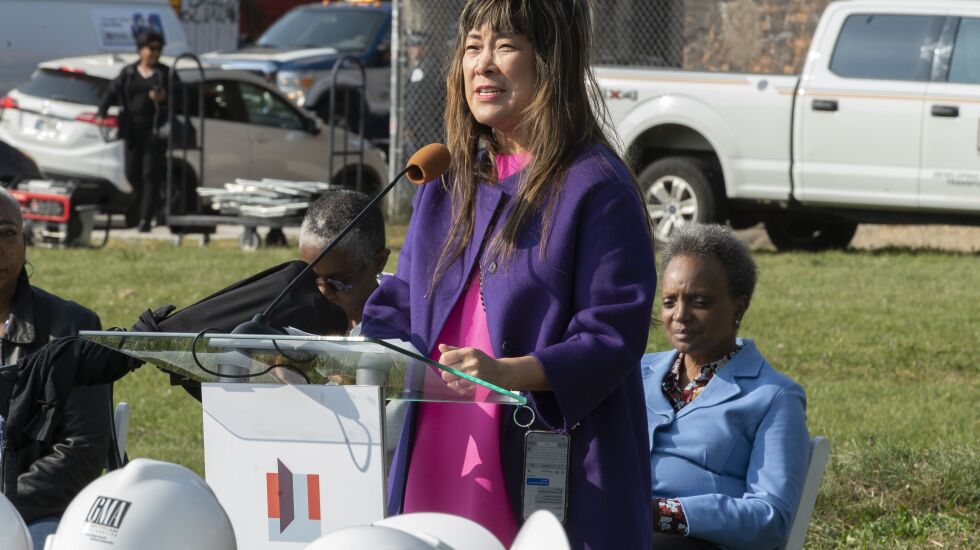
The Hatch siblings returned Tuesday to the place where they grew up: the Jane Addams Homes, one of Chicago’s first public housing projects.
Joan, Anna, Jennie and Rev. Marshall Hatch weren’t just there to reminisce. They were celebrating the fact that their stories, along with those of other Jane Addams residents and from public housing projects nationwide, will be preserved at the National Public Housing Museum.
“You don’t know where you’re going unless you know where you came from,” Jennie said at the official groundbreaking for the project, at 1322 W. Taylor St. in Little Italy.
Rev. Hatch was among the speakers at Tuesday’s festivities, joining Mayor Lori Lightfoot, Ald. Jason Ervin (28th) and museum officials.
Other speakers included Khaliah Ali, daughter of Muhammed Ali, and public housing-raised poets Tiff Beatty, who works for the museum, and Jellystone Robinson, who read a work dedicated to another Chicago project, “For Cabrini-Green, a Distant Lover.”

This is the first museum dedicated to telling the story of public housing in America, said executive director Lisa Yun Lee.
The museum has operated out of 625 N. Kingsbury St. in River North for several years. The larger space will allow them to expand programming and recreate apartments residents lived in, in the style of the New York Tenement Museum, which Lee described as a “sister museum.”
The museum will occupy the only remaining building at the Jane Addams Homes. Inside, museum visitors can see some restored apartments, including the three-bedroom unit where the Hatch family — eight siblings and their parents — lived from 1960 to 1974.

The building had been vacant since 2002, and looked like it, with overgrown weeds filling the courtyard and boards covering the windows. But the memories that came flooding back for the Hatch family were clear as ever.
Rev. Hatch recalled playing baseball in that courtyard when it was filled with animal sculptures that they used as bases.
“It was an adventure to go from first to second base,” said Rev. Hatch, pastor at New Mt. Pilgrim Missionary Baptist Church in Garfield Park.

The sculptures are among the artifacts returning to the museum, which will occupy two thirds of the building. The rest will become 15 mixed-income apartments.
Construction is expected to begin by year’s end and take less than a year.
“I never thought it would happen,” attorney Ron Grais, who served as counsel to the museum, said as he embraced Sunny Fischer, museum co-founder, before the groundbreaking.
“And I never doubted it for a second,” a smiling Fischer responded.
Fischer has worked on the museum since 2006, when she was approached by Deverra Beverly, a former Jane Addams resident. Beverly worked in historical preservation and had an idea for a museum that told the story of the Jane Addams Homes and the ABLA Homes in general. (ABLA was shorthand for the names of all the housing projects on the 137-acre site — Addams, Brooks, Loomis and Abbott.)
A product of public housing in New York City, Fischer took it on.
“I felt we needed a place where our children and grandchildren could see how we lived and where we lived,” Fischer said.

After 15 years spent raising money and securing the site, the group in June received the rest of the money needed for construction: a $4.5 million grant from the city, to go with $10 million already raised.
Most of the building will be preserved as-is. However, a new entry will be added along Ada Street, with a sculpture from Chicago artist Amanda Williams, who grew up in Auburn Gresham. Passing the Robert Taylor Homes while on the Dan Ryan Expressway originally inspired her to study architecture, she said.
The sculpture, in the works since 2018, will include paint chips from inside the Jane Addams Homes to create a glass mosaic that will cast a rose-tinted light as the sun shines through it.
Williams used the paint chips because residents weren’t allowed to paint their apartments. The paint chips. she said, are emblematic of residents’ acts of “joy and resistance.”
Michael Loria is a staff reporter at the Chicago Sun-Times via Report for America, a not-for-profit journalism program that aims to bolster the paper’s coverage of communities on the South and West sides.







